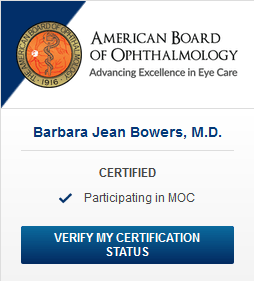(270) 415-0245
Mon – Thurs: 7:30AM – 5:00PM
Fri: 8:00AM - 12:00PM
Sat - Sun: Closed
BLADELESS CATARACT SURGERY
Bladeless Cataract Surgery
Dr. Bowers has been performing cataract surgery since 1993 with the addition of premium lens surgery since the first premium lens was FDA approved in 1998. She was the first surgeon in our region to offer this innovative technology when she moved to Paducah in 1999. She remains one the leading premium lens implant surgeons in the United States.
She was also excited to be the first surgeon in Kentucky and the tri-state region to offer Bladeless, computer guided laser cataract surgery. With Bladeless Laser Assisted Refractive Cataract Surgery, a 3-D scan of your eye is obtained and a customized surgical plan is designed by the surgeon on the computer. Once all the specifications unique to your eye are programmed, a state-of-the-art LenSx Laser is used to perform some of the most challenging steps. The laser can be used to create the surgical incision, treat astigmatism, open the lens capsule to allow access to the cataract, and can break up the cataract for removal when necessary.
After your cataract is removed, an intra-ocular lens (IOL) implant is placed in the eye to replace your natural lens. This IOL can be upgraded to a PREMIUM lens implant of which there are several options depending on your lifestyle and your individual ocular measurements. These PREMIUM IOLs can provide freedom from prescription glasses and even drastically reduce the need for reading glasses. With the use of TORIC astigmatism correcting IOLs, the new EYHANCE technology and/or the LenSx Laser, your vision can be fully corrected allowing you to enjoy the best DISTANCE visual acuity that your eye has the ability to see without the need for prescription glasses. Implanting PRESBYOPIA CORRECTING IOLs will allow excellent DISTANCE & NEAR vision and drastically reduce the need for reading/magnifying glasses. The latest advancements in premium lifestyle lens technology provide enhanced vision quality and a full range of vision.
Cataract surgery is a short outpatient procedure and most patients return to their daily activities the next day.





